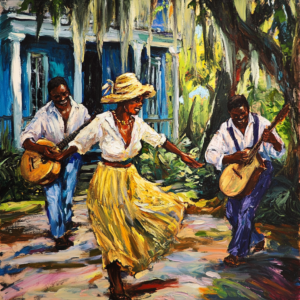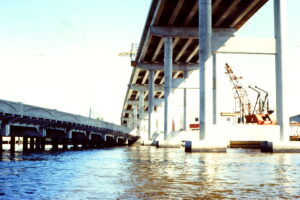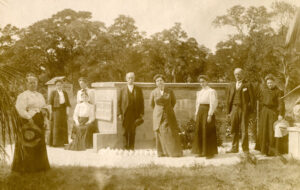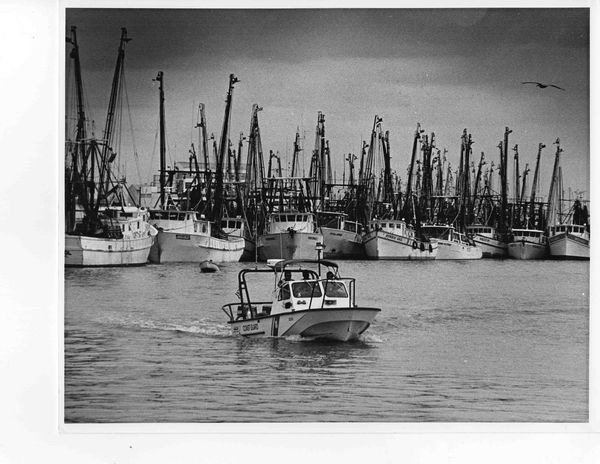
Today, I saw a pictures of the shrimp boats around Trico Seafood. Most were either on dry land or sunk in the bay. Those boats have been a part of our island history for over sixty years. In its heyday in the 1950s-70s, San Carlos Island was a huge shrimping port at one time hosting over 250 boats in the harbor.
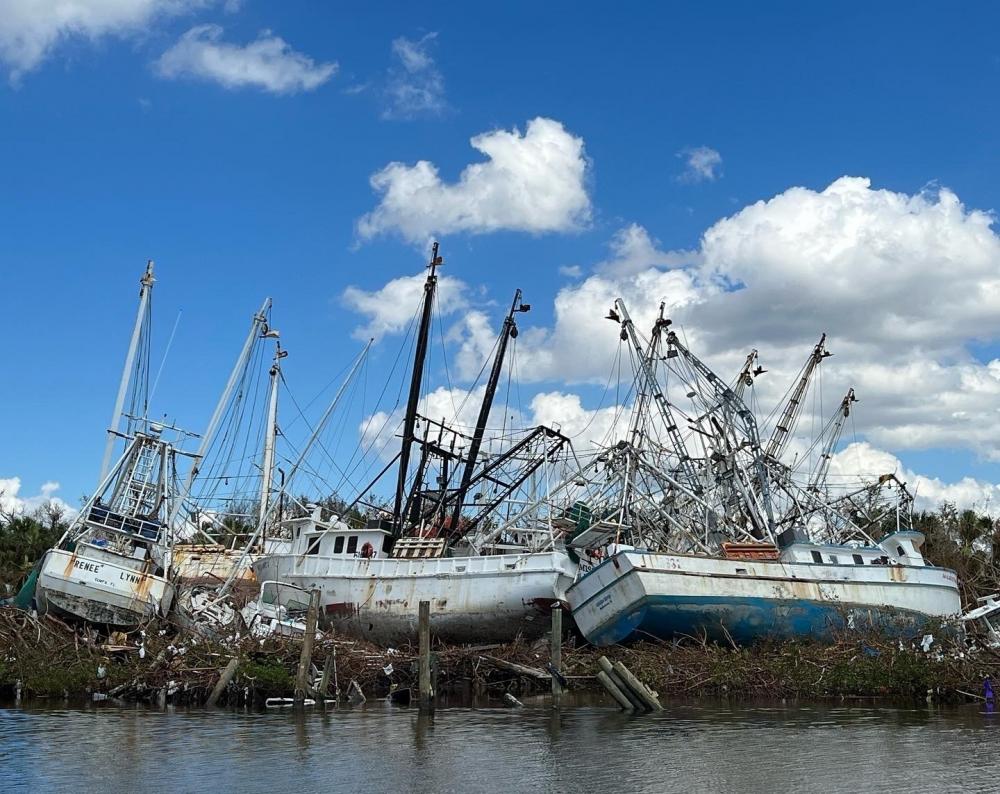
Although some shrimp boats were operating out of Fort Myers Beach prior to 1949, the discovery of “pink gold” in the Dry Tortugas off Key West gave the industry a boost. This species of shrimp, known by its scientific name of Penaesus Duoranum, is considered by many to be the sweetest species harvested in the United States.
When word got out that this new pink shrimp was something special, shrimpers from all over Florida began to relocate to the southern waters where the new species was being caught. Shrimpers needed a place to offload their catches and discovered the small island nestled between Estero Island and the mainland.
With its easy access from the Gulf, San Carlos Island became a place where the shrimp boats could unload their catch, repair their nets, and stock their boats with fuel and food. It didn’t take long before more docks and processing plants were constructed to prepare the shrimp for shipping across the country.
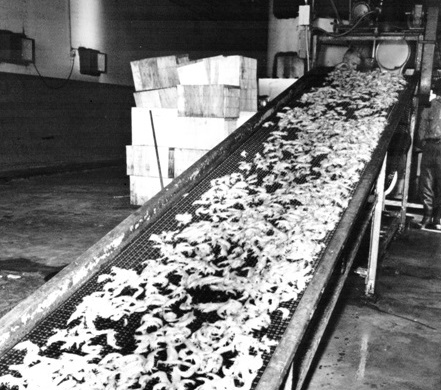
By 1951 seven shrimp packing houses had been built to serve the growing shrimp fleet. The first “Blessing of the Fleet” festivities began this year as well when an Episcopal Bishop blessed the fleet from the old swing bridge.
In 1952, local shrimpers began traveling to Campeche, Mexico where new pink shrimp beds had been discovered. Two years later, pink shrimp was discovered off the coast of Sanibel and the “pink gold rush” had begun.
At this time, the shrimpers were paid 38 cents per pound for 20/25 count shrimp and by the mid-1950s, the shrimp boats were pulling four nets on double rigs to keep up with the demand. Trawlers from Lee County, which includes Fort Myers Beach, harvested 3.9 million pounds of pink shrimp worth $12.5 million in 2021, or 43% of the state’s total catch, according to Florida Fish and Wildlife Conservation Commission.

At one time, there were more than four different commercial shrimping companies on San Carlos Island as well as independent shrimpers. I remember in the 60s and 70s, it was not uncommon to see the shrimp boats docked six deep along the harbor.
Recently, however, the number of boats and packing plants on San Carlos Island has decreased. The decline began in the 2000s with the recession. As fuel prices increased, it became difficult for the shrimpers to make a profit. In addition, with the recession in full swing, many people could not afford to buy shrimp.
Another problem facing the shrimping industry is competing with imported shrimp, which is farmed and not subject to the same U.S. Food and Drug Administration laws.
Today, the shrimping industry consists of a couple of independent companies, such as Gore Seafood, and two major seafood companies: Erickson and Jenson Seafood and Trico Shrimp Company. These companies own most of the boats and employ around 300 people.
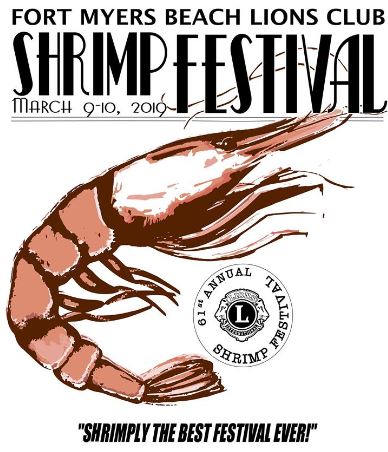
When Ian slammed into our island on September 28, the remaining shrimp fleet on San Carlos Island took a big hit. Anna Erickson, whose family is part owner of Erickson and Jensen Seafood, stated that only three of her company’s 11 boats are still afloat. These boats, many of which are over 60 feet long, lay scattered across the harbor and shore with their hulls exposed to the elements and the rigging blowing in the wind.
The future of shrimping on our islands is uncertain at this point. Many of the shrimp boats being used today were built in the 70s, and there are few ship builders left that can build a shrimp boat today.
When Ian slammed into our island on September 29, the remaining shrimp fleet on San Carlos Island took a big hit. Anna Erickson, whose family is part owner of Erickson and Jensen Seafood, stated that only three of her company’s 11 boats are still afloat.
The future of shrimping on our islands is uncertain at this point. Many of the shrimp boats being used today were built in the 70s, and there are few ship builders left that can build a shrimp boat today.
Even if a ship builder could be found, it might be difficult to find people to run the business and work on the boats. The younger generation has shown little interest in continuing these family businesses as shrimping is labor intensive. The work is difficult with long hours and weeks spent at sea, away from family and friends.
Back in the day, money was good and costs were much lower than today. Fuel, equipment, and supplies cost more today than in the past making it difficult to make the kind of money that was available in the 50s, 60s, and 70s.
I saw online recently that the seafood companies that own these boats are looking for large cranes to help them get the boats back into the water or to a place where repairs can begin. This is a good sign that they plan to rebuild the fleet.
The view of the shrimp boats docked along the wharf on San Carlos Island is iconic. The many pictures of this scene have become an integral part of our history. I can only hope that these businesses can be rebuilt, and we can continue to host the shrimp fleet for many years to come.
